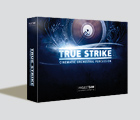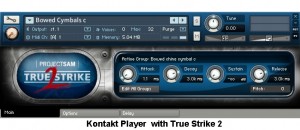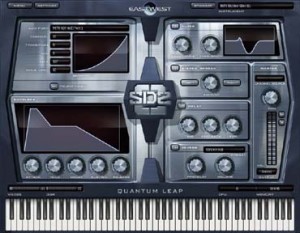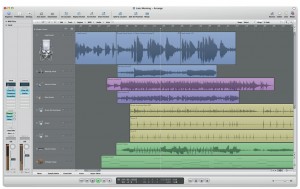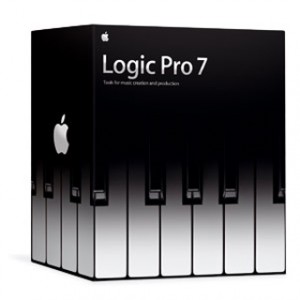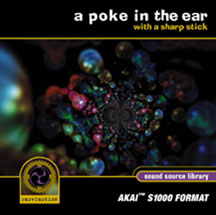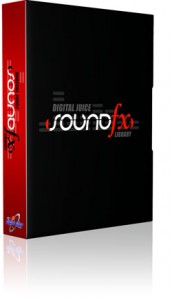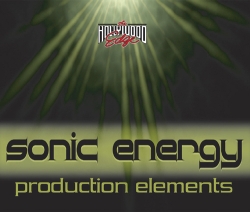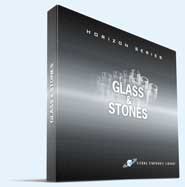| The arms race in sampling is all about realism and audio quality. The new standard in sample libraries for computers is 24-bit and, for musical instruments, a variety of articulations must be within easy reach.
Vienna Symphonic Library (VSL) GmbH in Vienna, Austria is a leading provider of symphonic instrument samples and has recently introduced a dedicated software player for their Vienna Instrument products that tackles these challenges. Vienna Instruments Special Edition (SE) is an all-in-one symphonic sample library and is one of the newer products using this software.
SE comprises two products, the Standard Library ($465 US) and the Extended Library ($625 US), distributed in the U.S by ILIO. In this review, we’ll see if VSL has an affordable all-in-one orchestral library with the features and sonic quality you would expect from a company that repeatedly sets the standard.
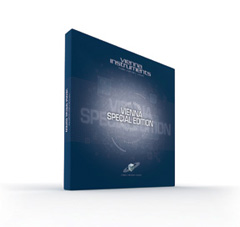
Features
The instruments in SE were selected from VSL’s extensive line of Vienna Instruments (VI) products and require 81 GB of drive space. The Standard Library contains 28 instruments and ensembles from the post-romantic orchestra. It includes solo and ensemble strings and brass, solo woodwinds and percussion, which includes drums, gongs, cymbals, Taiko drums, thunder sheet, metal chimes and plate bells. Rounding out the set are, Bösendorfer grand, celesta, glockenspiel, xylophone, marimba and vibes.
The Extended Library adds 35 instruments and ensembles but does not augment the articulations in the Standard Library instruments. Highlights include saxes, contrabass trombone, chamber strings (small ensembles), Appassionata strings (larger ensembles), Epic Horns, harp, classical guitar, electric guitar, Vienna Konzerthaus organ and harpsichord. For all you Beatles fans there’s even a piccolo trumpet. A complete listing of tracks can be found at vsl.co.at.
Whereas previous VSL products relied on third party sample players, such as Giga, HALion and Apple Logic’s EXS-24, the VI products use proprietary software for performance control and hard drive streaming. The cross-platform VI player serves up the 24-bit, 44.1 kHz samples as simple patches, containing a single articulation, for example, violins with short notes, and in combinations called matrices, which combine related articulations for use in a single MIDI track or switched instantly for live performance.
The multi-patch matrices reduce the number of sequencer tracks needed to create a realistic performance using multiple playing styles. For example, you can play quick short notes, longer notes and tremolo in a single matrix set-up.
The VI player runs stand-alone (for live) or as a DAW plug-in with Audio Units, RTAS and VST compatibility. RTAS support OS X was introduced in October. The minimum configuration is 1GB RAM on a G4 1 GHz under OS 10.4 or a 2GHz PC with Windows XP. Most of the work is done by a background process, which shifts the memory and CPU burden outside of the host DAW, such as Logic.
In Use
I installed SE on a G5 Quad with 4GB RAM, OS 10.4 and Logic Pro 7. SE requires a Syncrosoft USB security key, which must be registered online. It is sold by VSL as the Vienna Key ($39 US). Authorizing the standard and extended libraries was nearly trouble free. The only snag I ran into was caused by having both the Vienna Key and another Syncrosoft key for HALion connected during authorization. I temporarily removed the HALion key and completed the authorization with no problems. It would have been nice if the documentation recommended removing Syncrosoft keys used for other products. However, the installation tutorial video was otherwise excellent. Great to have a visual guide for a process that some find daunting.
By the way, VSL has created some excellent learning tools, including instructional videos and tutorial demo sequences for popular DAW applications. From my experience, nobody is doing a better job of helping their users get the most out of music sampling software.
The matrix approach is where the user interface gets powerful. Matrices are built from patches, each of which contain a single articulation of an instrument. There are several ways to call up the different articulations, including key switches and MIDI controllers and they can be used in many combinations in a single matrix.
Key switches are notes outside the range of the instrument (usually at the low end). For example, hit the lowest C with your left hand and the right hand plays for staccato notes, hit the C# and you are playing détaché, D for sustained and D# for legato notes and so on.
You can also switch articulations using a continuous controller, such as the mod wheel. For example, you could play long notes and use the mod wheel to layer short notes or switch to tremolo. The VI player can accommodate up to twelve rows and twelve columns in each matrix. And if that’s not enough, you can combine matrices into keyboard-switched “presets.” Many possibilities.
While you can’t create your own patches, which include velocity and sample mapping, you can create your own matrices and make personalized versions of the ones provided. I wanted to create a performance matrix with crescendo control, such as that provided in HALion Symphonic Orchestra (HSO), which uses the mod wheel to cross fade (or switch) between samples played with different dynamics. The first step was to assign a continuous MIDI controller, such as the pitch wheel or breath controller for “velocity” X-FADE. I simply control-click the fader in the PERFORM tab of the VI window and used the breath controller to assign it.
Next, I needed to assign a controller as a switch because I don’t want velocity X-FADE always on. For example, I still like to use key velocity for short notes. I used the ribbon controller on my Yamaha Motif ES-8 keyboard as the switch. After fine-tuning the response curve in the VI window, I had a zone at the top of the ribbon that I use with my left thumb to activate velocity cross fade with the breath controller when I need it.
SE is a very flexible product and it’s easy to create your own customized performance setups. Since VI is also a standalone player, you can create key-switched presets with completely different instruments for live performance. For example, a song might need cello for the intro, trumpet for a solo and tubular bells for the ending each with its own key-switched and controller-modified articulations.
Vienna Instruments has some impressive software features. The flexibility to arrange patches within a matrix is very logical. Using custom keyboard notes outside the range of the instrument is also useful but the ability to design your own articulation performance sets is a real innovation.
VSL decided that the Extended Library should widen the instrument variety rather than add articulations for the Standard Library instruments. I think some might prefer a deeper set of articulations rather than some of the slightly redundant instruments.
On the other hand, the variety of instruments between the two sets allows for more distinctive and expressive realizations where custom ensembles of solo instruments are needed. Three cheers for including the amazing solo strings in the Standard Library. I wish the harp were there too.
Also on my wish list for VSL products are the hardingfele (or Hardanger fiddle for you “Lord of the Rings” fans), and jazz inflections of the string bass, trumpet and trombone. There are several products providing the heart pounding drums that have become common in animal documentaries and action scores. It would be nice to have additional drums recorded on VSL’s “silent stage” to blend with VSL products. Native American and European frame drums would be a nice addition.
But I’m nitpicking; this is a versatile set. The saxes and muted trumpets and trombones lend a jazz versatility while the electric guitar takes it into action score territory. These are pro sounds with plenty of useful articulations.
The Appassionata strings answer the mail for those who felt that VSL strings are too pure or precise (not that that’s a flaw). This is a lovely cinematic sound for sweeping themes. The small ensemble strings, woodwinds and classical guitar are also excellent. I loved the Epic Horns in the Horizon series and I don’t know of any other all-in-one set that has such a sound.
While these instruments do not have all of the articulations or detailed range of samples of the Vienna Instruments products they were selected from, the sound quality is the same. These are beautiful recordings that work well in many genres, including symphonic mock-ups, TV and game scoring, rock and pop production and music education.
VSL records their samples in an acoustically dry environment. The bad news is that you have to add reverb to make a symphonic piece sound like it’s in a concert hall. The good news is that you have complete control over the acoustic setting. Logic’s Space Designer convolution reverb with a scoring stage or concert hall works wonders.
I like the fact that much of the processing and memory are handled by a separate process, the vsl-server, which shifts much of the memory and CPU burden from the sequencing or DAW application. This frees up DAW resources for software synths and other sample plug-ins. The VI software includes options for optimizing RAM utilization by clearing samples not in use in a MIDI recording. This makes laptops and some older computers a viable platform.
Thirty-two bit applications, such as SE can use up to 4GB of RAM. Since SE runs outside the DAW application, an 8GB machine supports a hefty number of instruments in SE while leaving another 4GB for the DAW and other plug-ins. Theoretically if you had 12GB of RAM you could add a another sample player that runs outside of your DAW.
As this article went to press, VSL announced their Vienna Ensemble product, which they say will be a free update for Vienna Instruments users. They say that the Vienna Ensemble stand-alone player is designed to host Vienna Instruments on networked computers, and balances memory use when run on the same computer with the DAW. It also adds support for 64-bit PCs and Macs.
Summary
Wrangling a symphonic orchestra, even one as easy to use as SE, requires practice. While the skills for “conducting” a symphonic library differ slightly than the live orchestra, the goals are similar. The performance should flow smoothly and dynamically and the instruments should blend acoustically into a symphonic sound.
SE does not let you tweak every conceivable nuance of a performance but most of the tweaking that you need to do is either easy or even better, it’s automatic. The intention of SE is to quickly capture a realistic performance so you spend more time creating the music and less time sweating the details.
SE includes a huge selection of professional symphonic instruments and I don’t know of any other all-in-one set that includes solo strings and horns this expressive. If you want top grade pro sounds at an affordable price, look no further. SE is an excellent value and a serious musical tool.
Carlos Garza is currently scoring an action feature film. His work has been heard on Image Entertainment DVDs, Turner Classic Movies and the National Gallery of Art. He is a regular contributor to Pro Audio Review.
Fast Facts
Applications: TV/film music, symphonic realization, education and live.
Key Features: 24-bit samples, plug-in for VST, RTAS and Audio Units, stand-alone player for live performance, resource management, PC and Mac.
US Prices: Standard Library, $465; Extended Library, $625; both require Vienna Key, $39
Sales and product information in the U.S. from ILIO at ILIO.com (818-707-7222)
Product Points
Plus
• Astounding sound quality
• Innovative controls for efficient operation
• Automatic realism
• Computing friendly
Minus
• Harp missing from standard library
• Limited articulations for non-mainstream compositions
The Score
This friendly-priced, all-in-one symphonic library from one of the leading innovators of realism and quality is an outstanding value.
(c) 2007 Carlos Garza |


